The transfer window has only now officially opened, but the biggest move of the summer happened a month or so ago: Paris Saint-Germain is no longer Kylian Mbappé's employer. The French giant held onto Mbappe's services for a couple of years longer than anyone thought, but his long-expected move to Real Madrid was made official just after the Champions League final.
PSG now have quite a bit of money burning a hole in their figurative pocket, and that's usually a pretty dangerous thing. But the club's rebuild actually began a year ago. Lionel Messi (Inter Miami) and Sergio Ramos (Sevilla) left on free transfers, Mauro Icardi left for a €10 million fee to become a Champions League hero at Galatasaray, and other veterans like Neymar (Al Hilal), Marco Verratti (Al Arabi), Abou Diallo (Al Arabi), Julian Draxler (Al-Ahli) and Georginio Wijnaldum (Al Ettifaq) left for clubs in the Middle East for a combined €167m in transfer fees.
It's rare that a club so well-monied makes more than €200m in transfer fees in a single offseason, but fear not: PSG spent more than double that in return. They remodeled their attack by spending nearly a combined €300m to acquire Randal Kolo Muani, Gonçalo Ramos, Ousmane Dembélé, Bradley Barcola, Hugo Ekitike and Kang-In Lee. They tried to sturdy both their present and future defense by spending nearly €150m for defenders Lucas Hernández and Lucas Beraldo and defensive midfielders Manuel Ugarte and Gabriel Moscardo.
In all, PSG's balance in the 2023-24 transfer windows -- the transfer fees gained minutes the transfer fees spent -- was, per Transfermarkt, minus-€247m, the largest in Europe. Chelsea (-€202.3m) was the only other club past -€200m, while eight other Premier League teams and Real Madrid passed -€100m.
And for all that effort, PSG went from averaging 2.24 points per game in Ligue 1 play in 2022-23 (85 points in 38 matches) to averaging ... 2.24 in 2023-24 (76 in 34). They did advance two rounds further in the Champions League, but a knockout competition isn't as reliable a barometer of success as league play is. By that metric, PSG did a lot of work and had lot of turnover just to stay exactly the same.
For other teams in Europe, though, their offseason moves actually did something. For better or worse, they saw their fortunes actually rise or fall in 2023-24, following execution of their transfer strategies of choice. With teams preparing to whip out the checkbook as the window opens once more, let's take a final look back at which teams spent big or thriftily (in terms of transfer fee balance), and which were either rewarded or punished for their efforts.
Oh, and it should go without saying that the transfer fee is only one of two numbers that matter -- the other being the salaries teams are paying -- and some moves are made with the future in mind, not the present. But we tend to focus a lot of our energy on immediate returns, so now that the transfer window fully opened across Europe on Monday, let's see who got their returns and who very much did not.
(Note: All transfer figures come from Transfermarkt.)
Big spending, big improvement
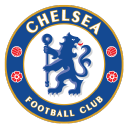 Chelsea
Chelsea
Spending: €471.8m
Biggest arrivals: midfielder Moisés Caicedo (€116.0m), midfielder Romeo Lavia (€62.1m), forward Christopher Nkunku (€60.0m)
Income: €269.5m
Biggest exits: attacking midfielder Kai Havertz (€75.0m), midfielder Mason Mount (€64.2m), midfielder Mateo Kovacic (€29.1m)
Balance: -€202.3m
Change in performance: +0.50 points per game
For each of these teams, I'm listing up to three players in the "biggest arrivals" department, but obviously Chelsea didn't stop at three. In addition to the huge numbers above, they also spent between €20-50m in transfer fees on attackers Cole Palmer and Nicolas Jackson, midfielder Lesley Ugochukwu, defender Axel Disasi and goalkeeper Robert Sánchez. It was their second massive overhaul in two seasons, and Chelsea were technically rewarded for their efforts by jumping from 12th to sixth in the Premier League.
Yes, the "improvement" only came after they led last season's "Big spending, big regression" list, and sixth place is not good enough for this level of spending. But technically, improvement is all that matters for this list.
 Real Madrid
Real Madrid
Spending: €129.5m
Biggest arrivals: midfielder Jude Bellingham (€103.0m), midfielder Arda Güler (€20.0m), fullback Fran García (€5.0m)
Income: €7.0m
Biggest exits: midfielder Antonio Blanco (€4.0m), fullback Álvaro Odriozola (€3.0m)
Balance: -€122.5m
Change in performance: +0.45 PPG
There were smaller moves, while Arda Guler looks like he could be pretty special in the future, but basically you could boil all the moves above down to one: They added Bellingham, jumped from second to first in LaLiga and went from exiting the Champions League in the semifinals to winning the competition. That's decent business. And now, in Mbappe, they're adding one of the best players in the world on a free transfer.
It's really tough to be Real Madrid.
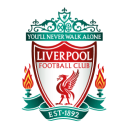 Liverpool
Liverpool
Spending: €172.0m
Biggest arrivals: midfielder Dominik Szoboszlai (€70.0m), midfielder Alexis Mac Allister (€42.0m), midfielder Ryan Gravenberch (€40.0m)
Income: €60.7m
Biggest exits: midfielder Fabinho (€46.7m), midfielder Jordan Henderson (€14.0m)
Balance: -€111.3m
Change in performance: +0.39 PPG
In addition to the names above, Liverpool also brought in Wataru Endo for €20m and let James Milner, Alex Oxlade-Chamberlain and Naby Keita (plus forward Roberto Firmino) leave on free transfers. Nearly every move of the last 12 months was focused on completely overhauling an outdated midfield, and for the most part the moves had the effects that Liverpool sought.
After stumbling to fifth place in 2022-23 with said stale midfield, Liverpool jumped back to a comfortable third and spent most of the season tightly involved in the Premier League title race before fading a bit at the end.
 Bournemouth
Bournemouth
Spending: €127.3m
Biggest arrivals: midfielder Tyler Adams (€26.9m), attacking midfielder Hamed Junior Traore (€25.6m), midfielder Alex Scott (€20.0m)
Income: €1.5m
Biggest exits: midfielder Ben Pearson (€1.5m)
Balance: -€125.8m
Change in performance: +0.24 PPG
The Cherries went for it this year and after some early wobbles, it paid off. After finishing 15th in the Premier League last season, they pushed out Gary O'Neil in favor of Andoni Iraola, then took on the biggest negative transfer balance of any English club not among England's richest. (It was an even larger negative balance than even Liverpool's or Newcastle's.) In addition to the names above, they also brought in fullback Milos Kerkez (€17.9m), midfielder Romain Faivre (€15m), winger Justin Kluivert (€10.8m) and fullback Max Aarons (€8.1m).
Long term, we'll see if this approach pays off. Considering they didn't get 2,000 league minutes from any of the individuals listed above -- and got only 199 combined minutes from Adams, Traore and Faivre -- you could certainly say that the success they enjoyed in 2023-24 had little to do with the spending. But after a dreadful start -- Bournemouth had three points after nine matches -- they basically played at a top-six pace the rest of the way, eventually finishing 12th. That gets them on this list, whether the big fees were worth it or not.
Big spending, big regression
 Manchester United
Manchester United
Spending: €202.3m
Biggest arrivals: forward Rasmus Hojlund (€73.9m), midfielder Mason Mount (€64.2 million), goalkeeper André Onana (€50.2m)
Income: €58.3m
Biggest exits: goalkeeper Dean Henderson (€17.5m), winger Anthony Elanga (€17.5m), midfielder Fred (€9.7m)
Balance: -€144.0m
Change in performance: -0.39 PPG
Nine of 20 Premier League clubs had a negative transfer balance of at least €100m this year, and only four were in the positive. Since someone still has to lose matches, it was a given that this portion of the list would therefore be pretty England-heavy. And if you paid any attention to the results this year, you knew who would be the first name on the list.
Granted, Manchester United's play in the FA Cup -- namely, their win over Liverpool in the quarterfinals and Manchester City in the finals, but not so much their semifinal win over Coventry City, in which they blew a 3-0 lead before prevailing on penalties -- redeemed a portion of the season, but only a portion. They lost to both Copenhagen and Galatasaray while finishing last in their Champions League group and oh yeah, their eighth-place league finish was their worst in 34 years.
This wasn't necessarily the fault of the new signings, but they only helped so much. Mount was nearly nonexistent, Onana patented the art of doing hard things well and easy things poorly and while Hojlund was decent for a 20-year old, you hope for more than 10 league goals from a €74m forward.
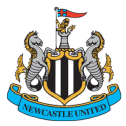 Newcastle
Newcastle
Spending: €153.2m
Biggest arrivals: midfielder Sandro Tonali (€64.0m), winger Harvey Barnes (€44.0m), fullback Tino Livramento (€37.2m)
Income: €44.6m
Biggest exits: winger Allan Saint-Maximin (€27.2m), forward Chris Wood (€17.0m), goalkeeper Karl Darlow (€0.4m)
Balance: -€108.6m
Change in performance: -0.29 PPG
Like Manchester United, Newcastle flipped from last year's "Big spending, big improvement" list to the opposite side this season. They got bitten particularly hard by the injury bug, and it probably didn't help matters that their two most expensive players logged a combined 1,232 league minutes due to a gambling-related suspension (Tonali) and a foot injury (Barnes). The gods of xG also frowned upon them: they were fifth in xG differential, but finished just seventh in the league.
 Brentford
Brentford
Spending: €72.4m
Biggest arrivals: defender Nathan Collins (€26.9m), winger Kevin Schade (€25.0m), goalkeeper Mark Flekken (€13.0m)
Income: €10.1m
Biggest exits: midfielder Mads Bistrup (€6.0m), goalkeeper David Raya (€3.3m loan), forward Halil Dervisoglu (€0.5m)
Balance: -€62.3m
Change in performance: -0.53 PPG
Brentford's transfer balance was chump change by Premier League standards, but looking at the rest of Europe's Big Five leagues, it would have ranked third among non-Premier Leaguers, ahead of (or behind?) everyone but PSG and Real Madrid.
It was certainly the most spending-intensive season for one of the league's more renowned moneyball clubs, and you can't really say it paid off in the short term. Collins and Flekken were immediate stalwarts in the defense, but Brentford also allowed 19 more goals than they had in 2022-23 and slipped from ninth to 16th in the league because of it.
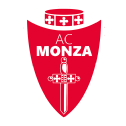 Monza
Monza
Spending: €45.3m
Biggest arrivals: midfielder Matteo Pessina (€12.0m), forward Andrea Petagna (€10.0m), forward Gianluca Caprari (€8.0m)
Income: €0.0m
Biggest exits: all free transfers
Balance: -€45.3m
Change in performance: -0.26 PPG
"Big spending" means different things to different clubs. After finishing 11th in their first Serie A season in 2022-23, Monza took a pretty big swing.
Adding Pessina from Atalanta paid off handsomely, as he led the team in minutes, touches, passes and ball recoveries and was second in goals, assists and defensive interventions. But the other expensive move, for Petagna, was triggered by his contributions on a loan-to-permanent deal the year before. He was loaned to Cagliari for the season to cut costs, and all this spending really didn't get Monza anywhere. Despite Pessina's awesomeness, they scored nine fewer goals and generated seven fewer points in 2023-24.
Thrifty spending, big improvement
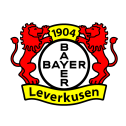 Bayer Leverkusen
Bayer Leverkusen
Spending: €81.8m
Biggest arrivals: winger Nathan Tella (€23.3m), forward Victor Boniface (€20.5m), midfielder Granit Xhaka (€15.0m)
Income: €69.2m
Biggest exits: winger Moussa Diaby (€55.0m), midfielder Mitchel Bakker (€9.5m), midfielder Kerem Demirbay (€3.7m)
Balance: -€12.6m
Change in performance: +1.18 PPG
As much of a difference as it can make to hire a perfect manager, nailing a perfect transfer window can benefit you as much or more. And if you do both at the same time, you might be able to do something even Bayern haven't done: Go unbeaten for a full Bundesliga season.
 Stuttgart
Stuttgart
Spending: €22.5m
Biggest arrivals: forward Serhou Guirassy (€9.0m), midfielder Angelo Stiller (€5.0m), midfielder Woo-yeong Jeong (€3.8m)
Income: €50.7m
Biggest exits: midfielder Wataru Endo (€20.0m), defender Konstantinos Mavropanos (€20.0m), fullback Borna Sosa (€8.0)
Balance: +28.2m
Change in performance: +1.18 PPG
Bayer Leverkusen's success overshadowed an almost equally impressive story playing out about 240 miles southeast of Leverkusen. In the past 12 seasons, only two teams have finished ahead of Bayern in the Bundesliga table: Leverkusen this season ... and Stuttgart this season. And the latter did it after barely surviving a relegation playoff the year before.
Like Leverkusen with Xabi Alonso, Stuttgart also made a brilliant replacement hire in 2022-23 (Sebastian Hoeness) and like Leverkusen, Stuttgart engineered an almost perfect set of transfers last summer. Guirassy teamed with loanee Deniz Undav to score a combined 46 league goals with 11 assists, while Stiller was an incredible midfield engine, ranking first on the team in progressive passes and overall pass completions, second in ball recoveries, third in assists and fourth in defensive interventions.
Two other brilliant additions -- midfielder Maximilian Mittelstädt (€500,000) and loanee Jamie Leweling, who recently signed a permanent deal with the club -- made this season a transformative one for the club, and they'll play in the Champions League for the first time in 15 seasons because of it.
 Girona
Girona
Spending: €22.3m
Biggest arrivals: forward Artem Dovbyk (€7.8m), midfielder Jhon Solis (€6.0m), midfielder Yangel Herrera (€5.0m)
Income: €17.9m
Biggest exits: defender Santiago Bueno (€12.0m), midfielder Oriol Romeu (€3.4m), midfielder Ramón Terrats (€2.5m)
Balance: -€4.4m
Change in performance: +0.84 PPG
While basically breaking even in terms of transfer fees, Girona added six newcomers who logged at least 2,100 minutes in league play, transformed their buildup play with the addition of Daley Blind (free transfers) and Eric García (loan), added excellent goalkeeping from Gazzaniga and, oh yeah, brought in Dovbyk, who led LaLiga in scoring.
The result of these moves? By far the best season in club history and a spot in next year's Champions League.
 Brest
Brest
Spending: €3.5m
Biggest arrivals: midfielder Mahdi Camara (€3.0m), fullback Bradley Locko (€0.5m)
Income: €8.6m
Biggest exits: winger Franck Honorat (€8.0m), fullback Jere Uronen (€0.6m)
Balance: +€5.1m
Change in performance: +0.64 PPG
Newcomers weren't necessarily the drivers of Brest's success in 2023-24 -- only Locko, Camara and Inter loanee Martín Satriano recorded more than 1,200 league minutes -- but they did drive most of Brest's creativity. Reims loanee Kamory Doumbia ranked second on the team with five assists in just 870 minutes, while Satriano ranked third with four and Locko and Camara each contributed three. And Locko was a particularly inspired addition, immediately becoming one of the best fullbacks in Ligue 1 and making huge contributions in terms of buildup play, defensive intervention and creativity in attack.
Brest also enjoyed their best season ever, and the newbies played a lovely role.
 Inter Milan
Inter Milan
Spending: €70.8m
Biggest arrivals: defender Benjamin Pavard (€30.0m), midfielder Kristjan Asllani (€10.0m), midfielder Tajon Buchanan (€8.0m)
Income: €129.4m
Biggest exits: goalkeeper Andre Onana (€50.2m), forward Andrea Pinamonti (€20.0m), midfielder Marcelo Brozovic (€18.0m)
Balance: +€58.6m
Change in performance: +0.59 PPG
Inter have been dealing with serious ownership issues for a while and recently came under new ownership altogether following missed payments by their previous holding company.
Also: They made the Champions League final last season, then charged to 94 points -- their most since 2006-07 -- and an easy Serie A title this year. After suffering through relative mediocrity for most of the 2010s, they've been impeccably run in the 2020s, with two league titles, two Coppa Italia titles, three Supercoppas and the aforementioned Champions League run.
Their 2023-24 moves were both thrifty and excellent. They replaced Onana with the sturdy Yann Sommer (€6.8m), they got 13 league goals and seven assists from free transfer Marcus Thuram, the ageless Francesco Acerbi (€4m) plugged in nicely in defense, and basically the entire bench was made up of loans and free transfers.
Inter will likely need another strong summer this time around -- four of their eight minute leaders are at least 34 years old -- but there's no reason to think they won't pull off exactly that. Ownership issues haven't prevented them from becoming the most well-run club in Italy.
Thrifty spending, big regression
 Freiburg
Freiburg
Spending: €8.5m
Biggest arrivals: forward Junior Adamu (€6.0m), goalkeeper Florian Müller (€1.5m), winger Florent Muslija (€1.0m)
Income: €42.8m
Biggest exits: winger Kevin Schade (€25.0m), goalkeeper Mark Flekken (€13.0m), midfielder Woo-yong Jeong (€3.8m)
Balance: +€34.3m
Change in performance: -0.50 PPG
Freiburg sending Flekken and Schade to Brentford didn't really work out for either club. Freiburg are religiously a "build from within" club; they've had a positive transfer fee balance for four straight seasons and six of the past seven, but while that didn't stop them from playing in Europe (and making the Europa League round of 16) in each of the past two seasons, sometimes you end up in a reset year. With 22-year old goalkeeper Noah Atubolu suffering ups and downs as Flekken's successor and the 22-year-old Adamu, their most expensive new addition, unready to contribute much after moving from RB Salzburg, this was indeed a pretty tough season, one that ended with longtime manager Christian Streich's retirement.
However, they still finished only four points out of another spot in Europe. That's a pretty good reset year for such a thrifty club.
 Brighton
Brighton
Spending: €109.5m
Biggest arrivals: forward Joao Pedro (€34.2m), midfielder Carlos Baleba (€27.0m), goalkeeper Bart Verbruggen (€20.0m)
Income: €195.9m
Biggest exits: midfielder Moises Caicedo (€116.0m), midfielder Alexis Mac Allister (€42.0m), goalkeeper Robert Sanchez (€28.7m)
Balance: +€86.4m
Change in performance: -0.37 PPG
Brighton is essentially the Premier League's Freiburg -- a team built to thrive with thriftiness and talent identification -- so I guess it makes sense that the two clubs suffered a down year together. As it turns out, losing Caicedo, Mac Allister and Sanchez to bigger English clubs a year after also losing Marc Cucurella, Yves Bissouma, Leandro Trossard and Neal Maupay was a bit of a "too much, too quickly" situation.
Among the newcomers, Joao Pedro (nine league goals, three assists) was solid, but loanee Ansu Fati continued to have injury problems, veterans like James Milner and Mahmoud Dahoud offered little, and youngsters Baleba and Valentín Barco weren't quite ready yet. After a brilliant start (five wins in their first six Premier League matches), Brighton wobbled for a bit, then collapsed with just six points in their final 10 matches before parting ways with manager Roberto De Zerbi.
 Villarreal
Villarreal
Spending: €12.5m
Biggest arrivals: forward Alexander Sorloth (€10.0m), midfielder Ramon Terrats (€2.5m)
Income: €111.9m
Biggest exits: forward Nicolas Jackson (€37.0m), defender Pau Torres (€33.0m), winger Samuel Chukwueze (€20.0m)
Balance: +€99.4m
Change in performance: -0.29 PPG
Villarreal pulled a "Mega-Brighton" this year, bringing in a nearly €100m balance through a number of big sales. And in Sorloth, they also brought in a player who immediately became one of LaLiga's best scorers. (He finished just one goal behind Dovbyk for the league lead.)
But despite that move, a dreadful first half of the season -- they were languishing in 15th place in mid-January -- resulted in their worst point total in five seasons and an eighth-place finish. They won't play in Europe next season, but they also played at a top-four pace from mid-January on. Could be worse.
A few different French clubs
Take your pick. Lens (plus-€5.1m transfer balance, fell from second to seventh) and Rennes (plus-€62.1m, fell from fourth to 10th) both went from Champions League contention to mid-table results -- Lens still nabbed a Conference League bid, at least -- while Clermont Foot (plus-€8.9m, fell from eighth to 18th) and Lorient (plus-€30.3m, fell from 10th to 17th) went from mid-table to relegation. Obviously there's only one big spender in Ligue 1, and almost everyone else is looking to be thrifty but successful. Brest pulled it off. These clubs, not so much.
